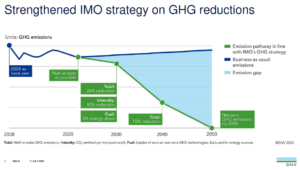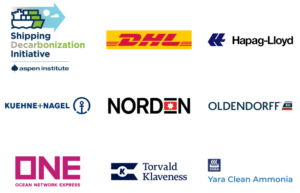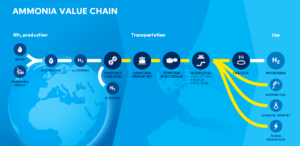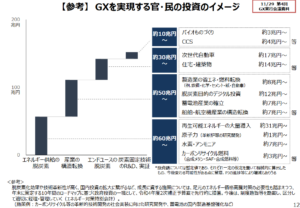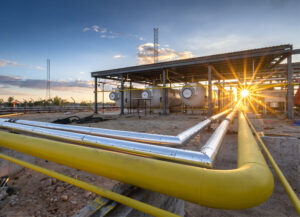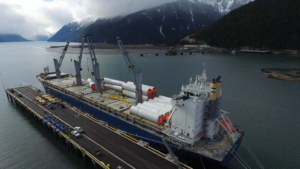Regulations
Development of Clean Fuel Ammonia Value Chain
The IMO charts a course to net-zero
The IMO member states have agreed to a new roadmap for the decarbonisation of the global shipping sector, including emissions reduction targets to be met in 2030 and 2040. It was also established that a well-to-wake approach will be the basis for the lifecycle analysis of maritime fuels going forward, with the uptake of near or zero-carbon alternative technologies & fuels to account for 5 - 10% of the global shipping sector by 2030.
Major maritime companies align behind book-and-claim approach to certification
Nine key shipping stakeholders have joined the Global Maritime Forum to issue a joint statement, committing to develop and implement “robust book and claim chain of custody systems” that will accelerate the uptake of new maritime fuels like ammonia.
Preparing the Netherlands for large-scale ammonia imports
As Europe is expected to import a significant part of its hydrogen needs, ammonia cracking will play a key role. New results from a pre-feasibility study shed light on important considerations for efficient, safe deployment of industrial scale cracking at Rotterdam. Modernisation of the Netherland’s official ammonia storage and loading guideline also shows that fit-for-purpose regulation will be important to meet the demands of a fast-growing ammonia industry.
GX bonds: new Japanese green subsidy program unveiled
Key elements of Japan’s Green Transformation (GX) push have been unveiled, including policy support for the implementation of ammonia energy solutions, and a $1 trillion total public-private investment package. A subsidy scheme to address the price difference between hydrogen, ammonia and fossil fuels is included, with a nominal price tag of $36 billion, running into the 2030s.
The state-of-play for decarbonising ammonia in Australia: new government report
While the opportunity for Australia to become a world-leading exporter of green molecules is well-established, State of Hydrogen 2022 suggests the best progress to date has been made on a domestic opportunity: decarbonisation of existing ammonia production within Australia. Government support for emerging hydrogen hubs, workforce training and regulatory updates are highlighted as key next steps.
Scrap “green” and “blue” hydrogen, use emissions intensity instead: new IEA report
The International Energy Agency has proposed a new taxonomy for hydrogen definitions based on emissions intensity, moving away from color labels. In Towards hydrogen definitions based on their emissions intensity, the IEA proposes a set of nine distinct, technology-neutral emissions intensity bands. The report also advocates for an international approach to ensure interoperability between certification schemes, and suggests that a mutual recognition approach based on the IPHE’s emissions methodology is the best way forward.
India: a future ammonia energy giant
Although a globally significant ammonia producer, India still relies on ammonia & fertilizer imports to support its agricultural sector. In our recent episode of Ammonia Project Features, we explored the potential of domestically-produced renewable ammonia to both replace these imports and position India as an ammonia energy giant. Excellent solar PV resources, plentiful government support and access to “round-the-clock” renewables were all highlighted as key drivers for India to meet its renewable ammonia potential.
Retrofitting vessels for ammonia fuel: new technical study from Grieg Star
Grieg Star and a series of high-profile maritime consortium partners have assessed the full feasibility for retrofitting a Grieg Star L-Class vessel to run on ammonia fuel. The study concludes that technical & regulatory challenges will not be showstoppers in the transition. A combination of high investment costs, uncertainty over ammonia fuel availability & pricing and slow market development remain the biggest barriers, presenting significant risks for first movers.


